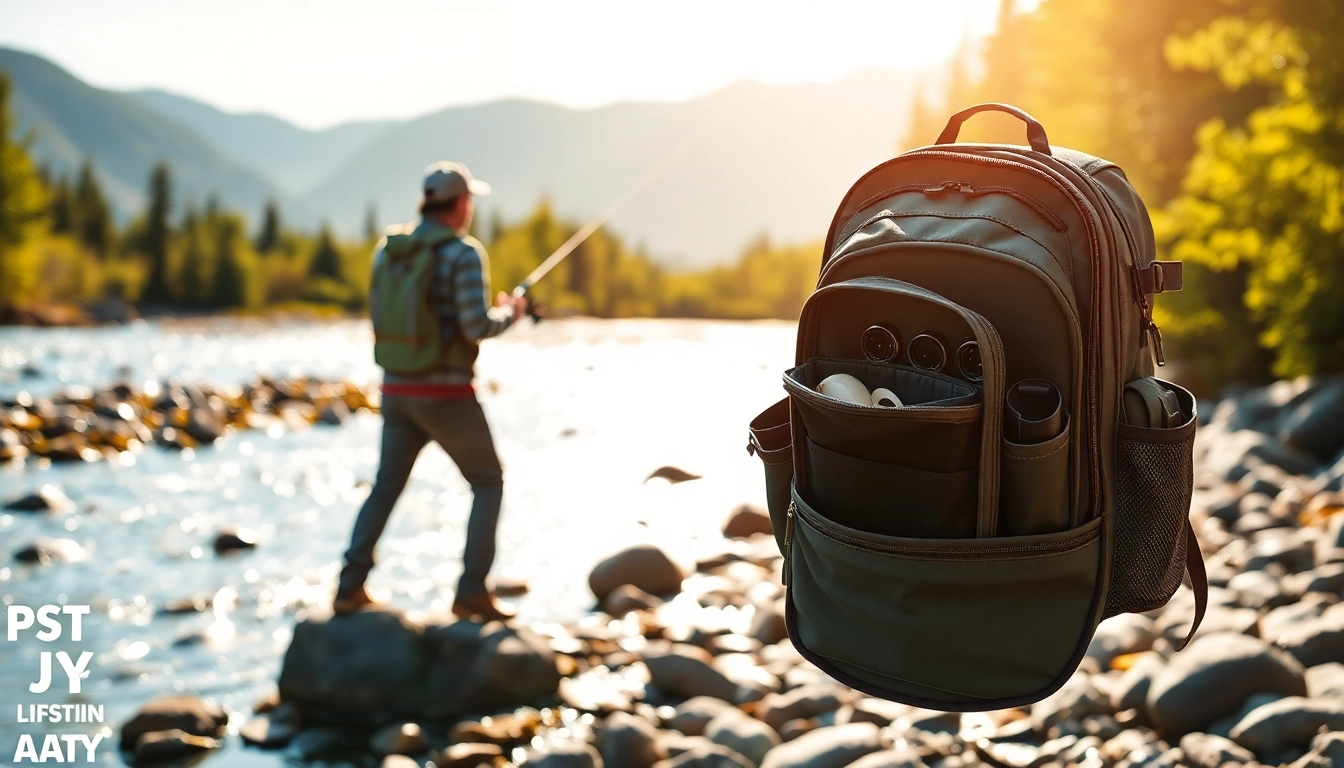Understanding the Importance of a Fly Fishing Backpack
When venturing out for a day on the water, the gear you carry can significantly impact your fishing experience. Among various accessories, a reliable Fly fishing backpack stands out as an essential item. It not only holds your equipment but also ensures that everything is organized and easily accessible. Whether you’re heading to a local river or a remote fishing spot, understanding the importance of a quality backpack cannot be overstated.
Why a Quality Backpack Matters
Investing in a quality backpack for fly fishing can make a substantial difference. A well-designed backpack offers the following advantages:
- Comfort: A good backpack should provide ample support, allowing you to carry your gear without strain. This is essential for long days of fishing.
- Durability: Fly fishing often involves exposure to water, mud, and rough terrain. A durable backpack can withstand these conditions.
- Organization: The right backpack will have various compartments for easy access and organization, ensuring you have everything at your fingertips when you need it.
- Weather Resistance: A quality backpack should be water-resistant (or waterproof) to protect your gear from unexpected rain or splashes.
Features to Look For in a Backpack
When selecting a fly fishing backpack, certain features enhance usability and performance:
- Size: Consider how much gear you need to carry. Different backpacks come in various sizes, catering to day trips or extended journeys.
- Comfort Features: Look for padded straps, good lumbar support, and ventilation to prevent discomfort during long treks.
- Attachment Points: D-rings, loops, and other attachment points allow you to secure additional gear, such as nets or rod holders.
- Hydration Compatibility: Many anglers prefer backpacks with hydration reservoirs or pockets for water bottles, so you can stay hydrated while fishing.
Assessing Your Personal Needs and Style
Your choice of a fly fishing backpack should reflect your personal fishing style and needs. Are you a minimalist who values lightweight gear? Or do you tend to carry an abundance of supplies for various fishing scenarios? Understanding your fishing habits will guide you in selecting a backpack that aligns with your expectations, ensuring a functional and satisfied experience on the water.
Types of Fly Fishing Backpacks and Their Uses
Not all fishing backpacks are created equal. Different types serve different purposes, each optimized for specific fishing experiences:
Day Packs vs. Multi-Day Packs
Day packs are generally smaller and ideal for quick trips, accommodating only the essentials needed for short outings. In contrast, multi-day packs are designed for longer adventures, providing ample space to store extra clothes, cooking gear, and food. Understanding your outing’s length helps determine which pack is appropriate.
Chest Packs and Sling Packs Overview
Chest packs and sling packs are compact options that allow easy access to gear without the bulk of a traditional backpack. Perfect for the minimalist angler, these packs distribute weight over your torso, providing comfort while keeping essential items within reach. They typically feature pockets for fly boxes, tools, and personal items, allowing for unhindered casting.
Specialty Backpacks for Unique Fishing Situations
Some fishing situations demand specialized backpacks. For instance, backcountry fishing may require a rugged, waterproof design with extra capacity for survival gear. Similarly, urban fishing environments may benefit from a sleek, discreet profile. Knowing the context of your fishing helps inform your backpack choice for optimal results.
Selecting the Right Fly Fishing Backpack Materials
The materials used in fly fishing backpacks are pivotal in determining their performance and durability. Here’s what to consider:
Waterproof vs. Water-resistant Options
A backpack’s ability to keep your gear dry largely depends on the materials used. Waterproof fabrics, like nylon with coatings or seals, are excellent for keeping moisture out completely. Water-resistant options, while not fail-proof, can handle light splashes and rain. Selecting the right level of protection aligns with your fishing environment and anticipated conditions.
Durability and Weight Considerations
Durability must be balanced with weight when selecting materials. Heavy-duty fabrics may offer better abrasion-resistance and protect against punctures but add extra weight. Lighter materials help keep your pack manageable, especially for longer treks, so it’s crucial to find a compromise that suits your needs.
Comfort Features for Long Days on the Water
On extended outings, comfort becomes a priority. Padded shoulder straps, breathable back panels, and adjustable harness systems contribute to overall comfort. Some backpacks also include load-lifters and sternum straps, which help distribute weight evenly, reducing fatigue during long fishing sessions.
Organizing Gear Within Your Fly Fishing Backpack
Effective organization of your gear is key to a successful fishing trip. Utilizing your backpack’s compartments effectively can enhance your experience on the water.
Optimal Layout for Effective Access
Design a layout within your pack that facilitates quick access to frequently used items. Place heavier items at the bottom for stability and lighter items at the top or in external pockets for easy retrieval. Consider using sling packs that allow for quick rotations, making it easier to grab what you need without taking off the pack.
Essential Gear to Keep Handy
Some items should always be within easy reach. These may include:
- Fly boxes with your chosen patterns
- Leader lines and tippets
- Tools such as forceps and nippers
- Filters or water purification tablets
- Sunscreen and insect repellent
Using Compartments to Your Advantage
Make the most of your backpack’s compartments. For example, designate a compartment for dry items and another for equipment prone to getting wet. Utilizing small pouches or organizers can also help segment items further, keeping everything in its place and making it easy to find what you need, when you need it.
Maintaining Your Fly Fishing Backpack for Longevity
Once you’ve found the ideal fly fishing backpack, proper care ensures it serves you well for years to come. It’s crucial to implement a maintenance routine that keeps your pack in top condition.
Cleaning and Care Tips
To maintain your backpack’s functionality:
- Rinse it after use to remove dirt and sand.
- Use mild soap and water to clean, avoiding harsh chemicals that can damage the material.
- Dry your backpack away from direct sunlight to prevent fabric degradation.
Storage Solutions When Not in Use
When not in use, store your backpack in a cool, dry place away from direct sunlight. Ensure that it’s not stuffed or compressed, which can distort its shape and reduce its lifespan. Keeping it in its original shape helps maintain essential features, like waterproofing and structural integrity.
Repairing Common Wear and Tear Issues
No matter the quality of your backpack, wear and tear are inevitable. To extend its longevity:
- Address small tears or punctures promptly with repair kits available for fabrics.
- Reinforce damaged seams with strong fabric glue before they worsen.
- For zippers, lubricate them regularly to keep them functional.
By prioritizing maintenance, you ensure that your fly fishing backpack remains a reliable companion on your adventures. With careful consideration of your needs and a focus on quality, you can enhance your fishing experience and connect more deeply with nature on your fishing journeys.

